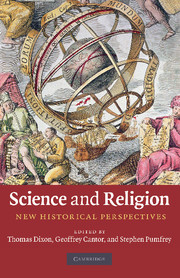Book contents
- Frontmatter
- Contents
- List of contributors
- Preface
- 1 Introduction
- PART I CATEGORIES
- PART II NARRATIVES
- PART III EVOLUTION AND CREATIONISM
- 7 Evolution and creationism in the Islamic world
- 8 Understanding creationism and evolution in America and Europe
- PART IV THE POLITICS OF PUBLISHING
- PART V WAYS FORWARD
- Select bibliography
- Index
8 - Understanding creationism and evolution in America and Europe
Published online by Cambridge University Press: 05 May 2010
- Frontmatter
- Contents
- List of contributors
- Preface
- 1 Introduction
- PART I CATEGORIES
- PART II NARRATIVES
- PART III EVOLUTION AND CREATIONISM
- 7 Evolution and creationism in the Islamic world
- 8 Understanding creationism and evolution in America and Europe
- PART IV THE POLITICS OF PUBLISHING
- PART V WAYS FORWARD
- Select bibliography
- Index
Summary
There are few scientific texts that have rivalled Charles Darwin's On the origin of species (1859) for the impact they have had on the way that people understand nature and their place in it. In the context of an enduring belief in the biblical account of the ‘special creation’ of species by God, Darwin's claim that all species were related through common descent was heterodox enough, yet not entirely novel. Darwin's grandfather, Erasmus, had been an early proponent of evolutionary thought, and the anonymous publication of the Vestiges of the natural history of creation (1844) by the journalist and publisher Robert Chambers had caused much controversy with its speculative history of cosmological ‘transmutation’, in which all living things had developed from earlier, simpler forms. But what was new and arguably more significant in Darwin's work was the idea that the emergence of new and often more complex species could be explained by ‘natural selection’: by the way that environmental pressure will favour the reproduction of those individuals that possess certain characteristics, a process that over a long period of time can radically alter the characteristics of an interbreeding population. The influence of Darwin's book was clearly also enhanced by his accessible and engaging prose, and the way that it combined detailed evidence from an extraordinary range of domains with an inductive style of scientific reasoning that went well beyond a strict Baconian method; instead he deployed metaphor to grasp the similarities between the dissimilar and then sought to persuade the reader of the reality of that metaphor.
- Type
- Chapter
- Information
- Science and ReligionNew Historical Perspectives, pp. 153 - 174Publisher: Cambridge University PressPrint publication year: 2010
- 2
- Cited by



